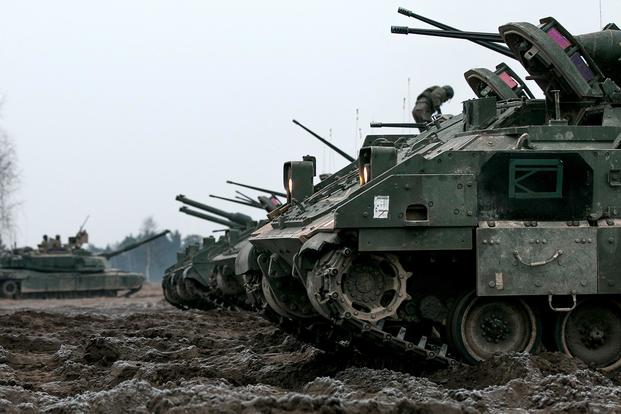The deputy commander of Army Futures Command told lawmakers recently that he expects the competition to replace the Bradley Fighting Vehicle to be highly competitive.
The Army recently released the request for proposal (RFP) for the Next Generation Combat Vehicle-Optional Manned Vehicle (NGCV-OMFV), the second-highest priority in the service's new modernization strategy.
The new vehicle will be designed to maneuver a squad of soldiers through dense urban terrain as well as wooded areas and deliver "decisive lethality" in close combat against a near-peer foe such as Russia, according to the RFP the Army released in late March.
"We believe there will be between three and five [manufacturers] competing on that," Lt. Gen. James Richardson, deputy commander of AFC, told members of the Senate Armed Services Committee's Airland subcommittee Tuesday. "We have had 12 industry days up until this point, and we believe the outcome will be very positive. We believe we will get a fair price for a great vehicle."
Subcommittee chairman Sen. Tom Cotton, R-Arkansas, seemed more concerned during the hearing about whether the Army intends to keep the name NGCV-OMFV.
"You have something called the NGCV-OMFV. I hope Army has plans to give all of these new systems cool names that soldiers want to use and ride in," Cotton said.
Army officials first joked about Cotton's name being under consideration for a new vehicle name, but then said the service will likely come up with a name as meaningful as the Bradley's. It is named after World War II Gen. Omar Bradley.
They said that it is crucial for the Bradley replacement to have the option to be unmanned, so commanders can keep soldiers out of danger whenever possible.
Army officials also want the vehicle to be equipped with a main armament that's more powerful than the Bradley's 25mm cannon. The RFP calls for a primary weapon system up to 50mm for "precision direct fire capability for early/forcible entry operations."
The vehicle will also likely be equipped with some type of artificial intelligence to provide driver assist, 360-degree situational awareness and computer-assisted targeting and acquisition capabilities, service officials say.
The Army is also developing a new Mobile Active Protection System (MAPS) to go on future vehicles so the service is not tied to proprietary APS systems, such as the Israeli-designed Trophy system currently being installed on M1 tanks, Lt. Gen. Paul Ostrowski, principal military deputy to the assistant secretary of the Army for acquisition, logistics and technology, told lawmakers.
-- Matthew Cox can be reached at matthew.cox@military.com.













